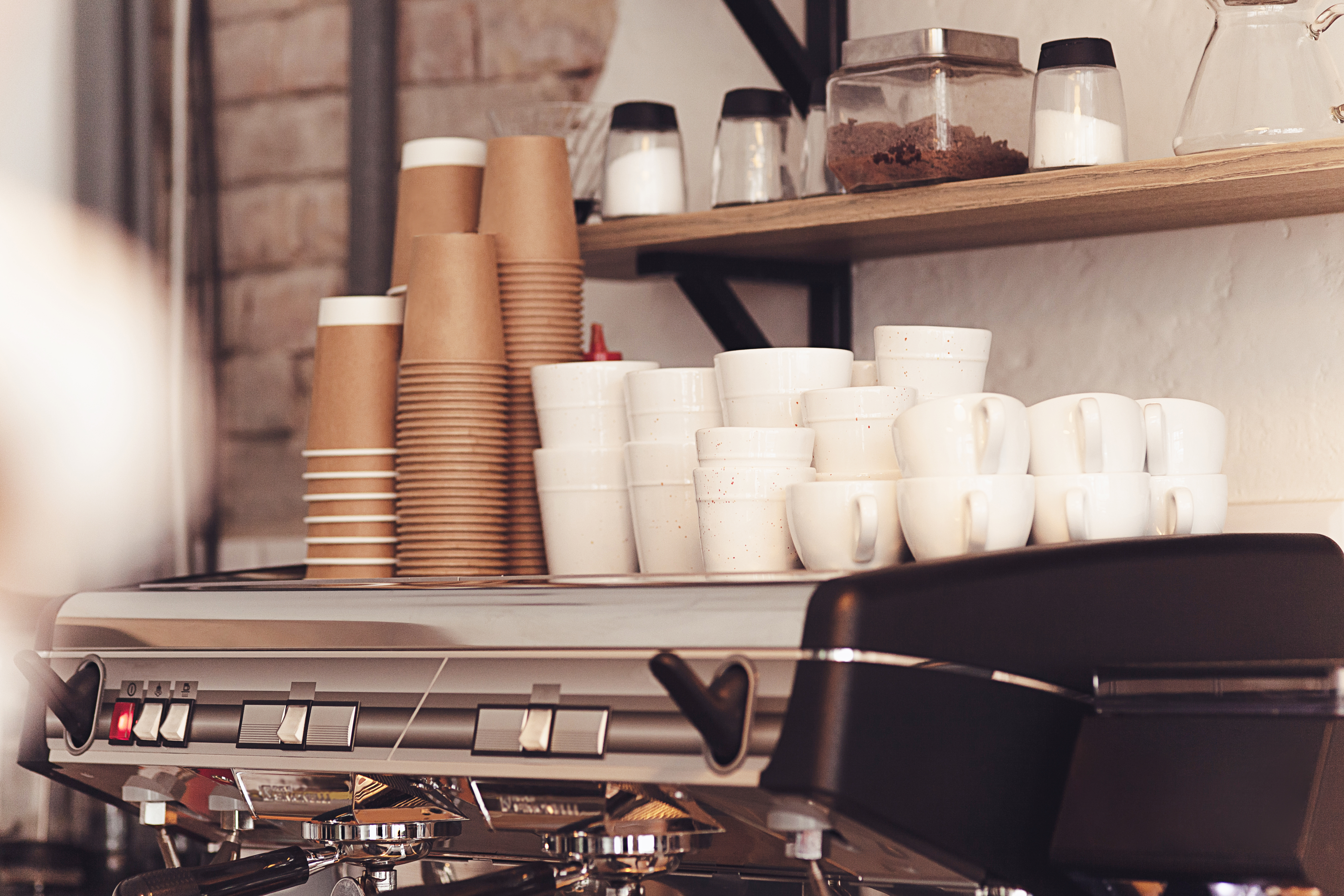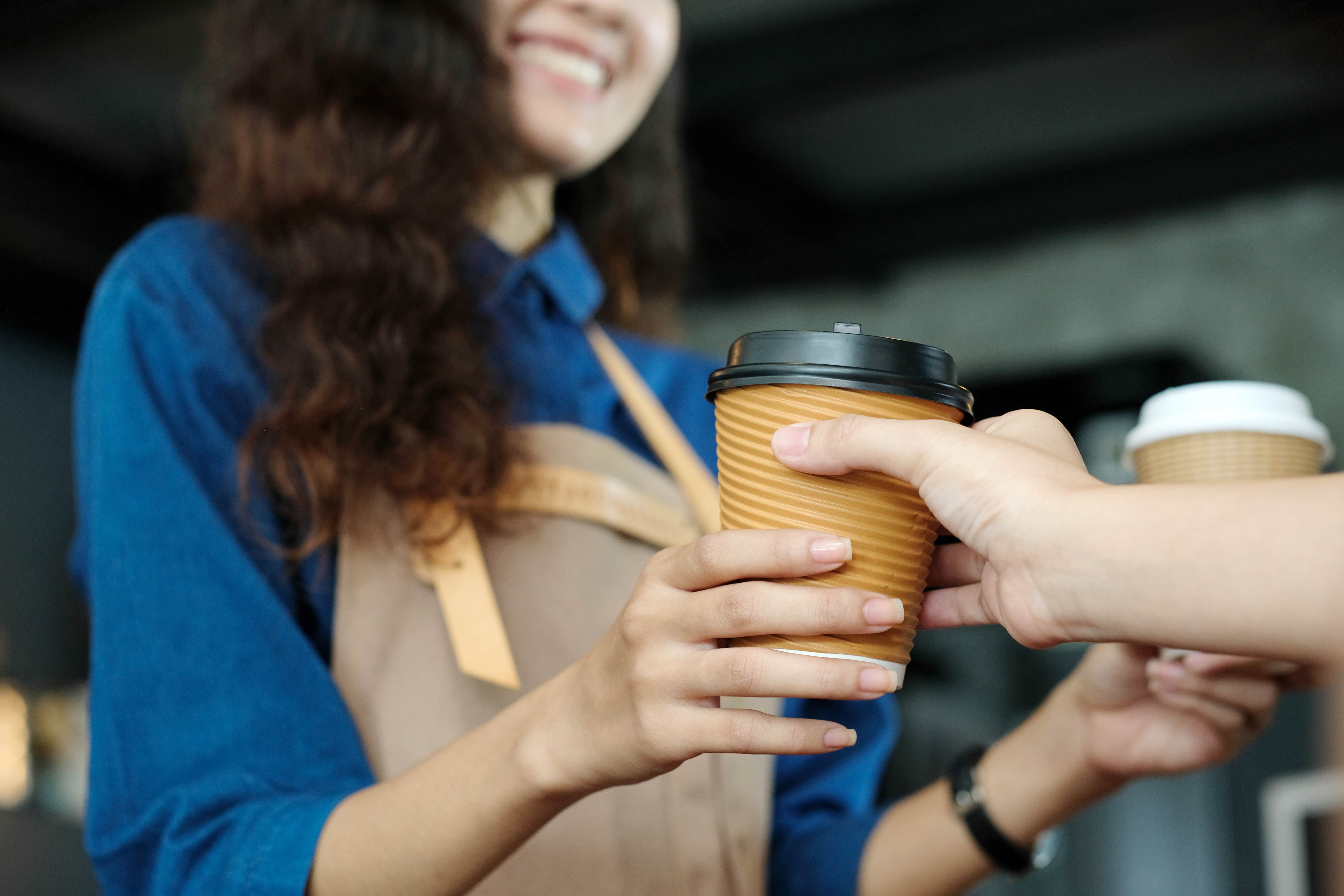
So you were up all night cramming for a character quiz, and now you’re in desperate need of a caffeine fix. No problem--Integrated Chinese covered how to order a beverage, and these days you can’t throw a stone in a major Chinese city without hitting a cafe. You stride into the nearest Luckin Coffee and say confidently to the barista,
“我要一杯咖啡。” (Wǒ yào yì bēi kāfēi.)
Nailed it, right?
Not quite. “我要一杯咖啡” might earn you a passing grade in Chinese class, but it doesn’t cut it in the real world. Even if you prefer your coffee hot and black, the barista will have some follow-up questions.
Not to worry--we’ve got your back. We’ll walk you through the different components of a drink order and then show you how to put them all together so that you can get your perfect cup of coffee without a hitch. Tea drinkers should also stick around, because much of this blog post is important for you to know too!
Greeting
Start off by greeting your barista with a cheerful “你好!” so that they know you weren’t raised in a barn--unless you were raised in a barn, in which case you should still greet them properly anyway! Now on to the business of ordering.
Types of Drinks
If regular coffee (咖啡 kāfēi) isn’t your drink of choice, check below for the names of other common drinks.
- Espresso - 浓缩咖啡 nóngsuō kāfēi
- Latte - 拿铁 nátiě
- Cappuccino - 卡布奇诺 kǎbùqínuò
- Mocha - 摩卡 mókǎ
- Macchiato - 玛奇朵 mǎqíduǒ
- Americano - 美式咖啡 Měishì kāfēi
- Black Tea - 红茶 hóngchá
- Green Tea - 绿茶 lǜchá
- Hot Cocoa - 热巧克力 rè qiǎokèlì
If you want your drink iced, all you have to do is insert 冰 (bīng, ice) before the name of the drink. For example, an iced latte is 冰拿铁 (bīng nátiě). It’s also fairly common to hear native speakers specify whether they want their drink hot or cold by saying something like “我要一杯拿铁,冰的”--either way is correct.
If you’re a flavored coffee drinker, you can specify the flavor you want by putting it before the name of the drink. For example, peppermint mocha is 薄荷摩卡 (bòhé mókǎ). Below we've listed some of the most common flavors.
- Caramel - 焦糖 jiāotáng
- Vanilla - 香草 xiāngcǎo
- Hazelnut - 榛子 zhēnzi
- Cinnamon - 肉桂 ròuguì
- Peppermint - 薄荷 bòhé
- Matcha - 抹茶 mǒchá
- Lemon - 柠檬 níngméng
Tragically, pumpkin spice latte lovers are out of luck. As of this writing, none of the major coffee chains in China offer pumpkin spice, although depending on where you are located you could try your luck at one of the many hip, boutique coffee shops in China’s first-tier cities.
Sizes
The second important piece of information the barista needs to know is what size you would like.
- Small - 小杯 xiǎo bēi
- Medium - 中杯 zhōng bēi
- Large - 大杯 dà bēi
There are a couple of different ways you can say what size cup you would like. The size is usually inserted in front of the type of drink. For example, a large cup of green tea can be correctly translated as 一杯大杯绿茶 (yì bēi dà bēi lǜchá). In practice, however, you’re more likely to hear native speakers order their coffee like this:
“你好!我要一个大杯绿茶。”
“你好!我要一杯绿茶,大杯的。”
Both phrases mean “Hello! I would like a large cup of green tea,” but by using 个 or putting the size after the type of drink, you will sound more natural.
How Do You Take It?
If you take your coffee black, you can skip to the next section. If not, here’s how you can customize your drink ever further. In our experience, many coffee shops in China have a small sidebar where you can add your own dairy and sweeteners, but it’s good to know how to ask the barista for these extras anyway.
Check the chart below for some common extras you might want to add (or remove) from your order.
- Milk - 牛奶 niúnǎi
- Skim milk - 低脂牛奶 dī zhī niúnǎi
- Cream - 奶油 nǎiyóu
- Whipped cream - 鲜奶油 xiān nǎiyóu
- Soy milk - 豆浆 dòujiāng
- Shot of espresso - 一份浓缩咖啡 yí fèn nóngsuō kāfēi
- Sugar - 糖 táng
- Honey - 蜂蜜 fēngmì
- Decaf - 低咖啡因 dī kāfēiyīn
To add something to your order, you should use the verb 加 (jiā, to add) or 要 (yào, to want, although in this context ‘with’ is a better translation). If you don’t want something in your coffee, you can use 不要 (bú yào, best translated here as ‘without’). Let’s take a look at some examples:
- 加牛奶和糖 (jiā niúnǎi hé táng, with milk and sugar)
- 要低脂牛奶 (yào dī zhī niúnǎi, with skim milk)
- 不要鲜奶油 (bú yào xiān nǎiyóu, no whipped cream)
Some establishments will give you an option to customize how much ice or sugar goes into your drink. This is especially common at bubble tea shops. You may have learned the 多/少 + 放(点儿) pattern in Chinese class, and it’s completely correct to say “少放点儿糖” (shǎo fàng diǎnr táng, “add less sugar”) or “多放点儿冰” (duō fàng diǎnr bīng, “add more ice”). But native speakers usually use one of the following shorter phrases, which lets them rattle off their orders more quickly:
- 多冰 (duō bīng, extra ice)
- 少冰 (shǎo bīng, less ice)
- 多糖 (duō táng, extra sugar)
- 半糖 (bàn táng, half the normal amount of sugar)
- 微糖 (wēi táng, low sugar)
- 无糖 (wú táng, no added sugar)
Note that you don’t have to use 加 or 要 here; just say the phrase after the size and type of drink. For example, to order a medium iced coffee with extra ice, you could say “一杯冰咖啡,中杯,多冰。”
For Here or To Go?

Last but not least, you should tell the barista whether you want your coffee for here or to go. If you would like to enjoy your drink in the store, you can say 在这里用 (zài zhèlǐ yòng, for here). If you want your coffee to go, you can say either 打包 (dǎbāo) or 带走 (dài zǒu).
Putting It All Together
We just threw a lot of information at you, so let’s focus on the core sentence structure for a moment.
Greeting + I would like a + size + iced/hot+ flavor + drink + customizations + for here/to go
Remember, you can be a little bit flexible where you add the size and temperature of your drink. Our best advice is to listen to how the native speakers in line ahead of you order their drinks and take your cues from them.
The sample structure may seem complicated, but don’t panic. Unless your drink order is really specific, you probably won’t use all of those elements. Plus, once you practice ordering a few times, your order will roll off your tongue. Let’s look at a few example orders:
- 你好!我要一个小杯美式咖啡,在这里用。
- Nǐ hǎo! Wǒ yào yí gè xiǎo bēi Měishì kāfēi, zài zhèlǐ yòng.
- Hello! I would like a small Americano for here.
- 你好!来一杯冰柠檬绿茶,中杯,加蜂蜜,带走。
- Nǐ hǎo! Lái yì bēi bīng níngméng lǜchá, zhōng bēi, jiā fēngmì, dài zǒu.
- Hello! I’ll have a medium iced lemon green tea with honey to go.
- 早上好!请给我来一杯热巧克力,大杯,不要鲜奶油。
- Zǎoshang hǎo! Qǐng gěi wǒ lái yì bēi rè qiǎokèlì, dà bēi, bú yào xiān nǎiyóu.
- Good morning! Please give me a large hot chocolate, no whipped cream.
- 你好!我要一杯香草拿铁,中杯,热的,加双份浓缩,在这里用。
- Nǐ hǎo! Wǒ yào yì bēi xiāngcǎo nátiě, zhōng bēi, rè de, jiā shuāng fèn nóngsuō, zài zhèlǐ yòng.
- Hello! I would like a medium hot vanilla latte with a double shot of espresso, for here.
And that’s it! Go forth into the world and get your caffeine fix. As always, we welcome your feedback in the comments, and we would love to hear your coffee order too--in Chinese, of course!


Comments